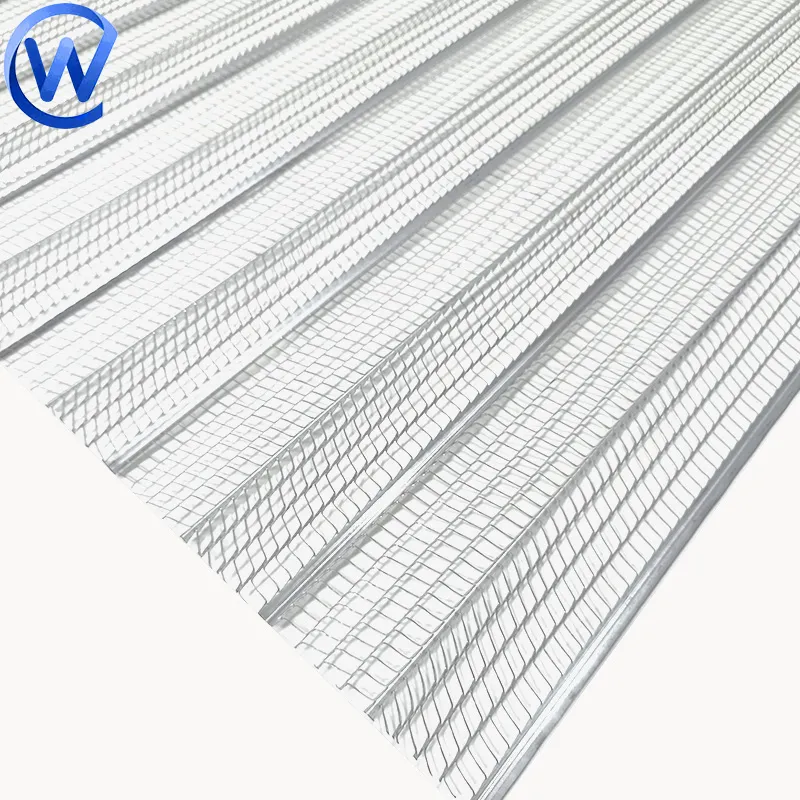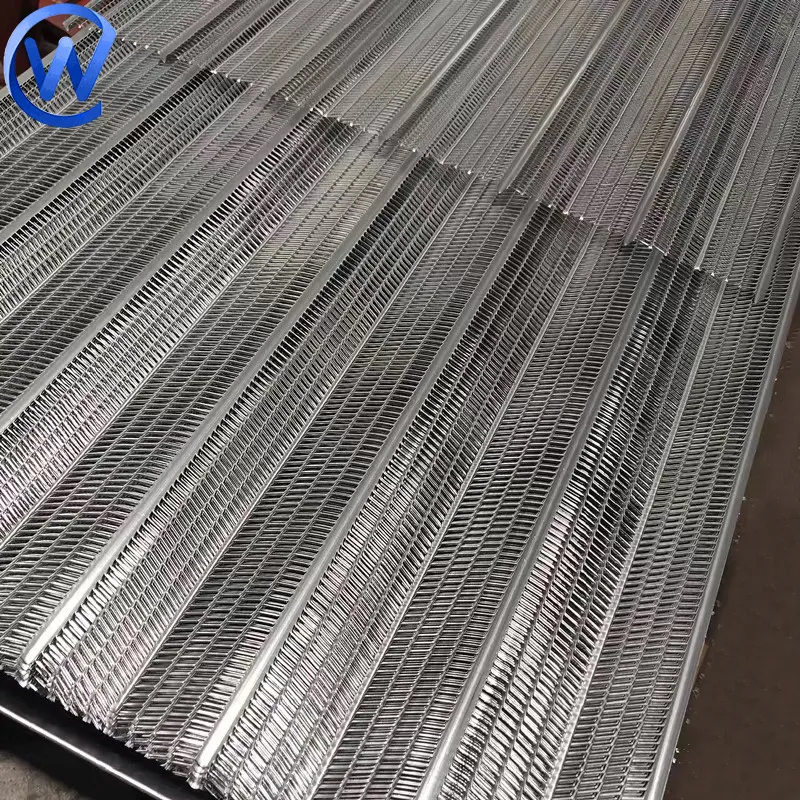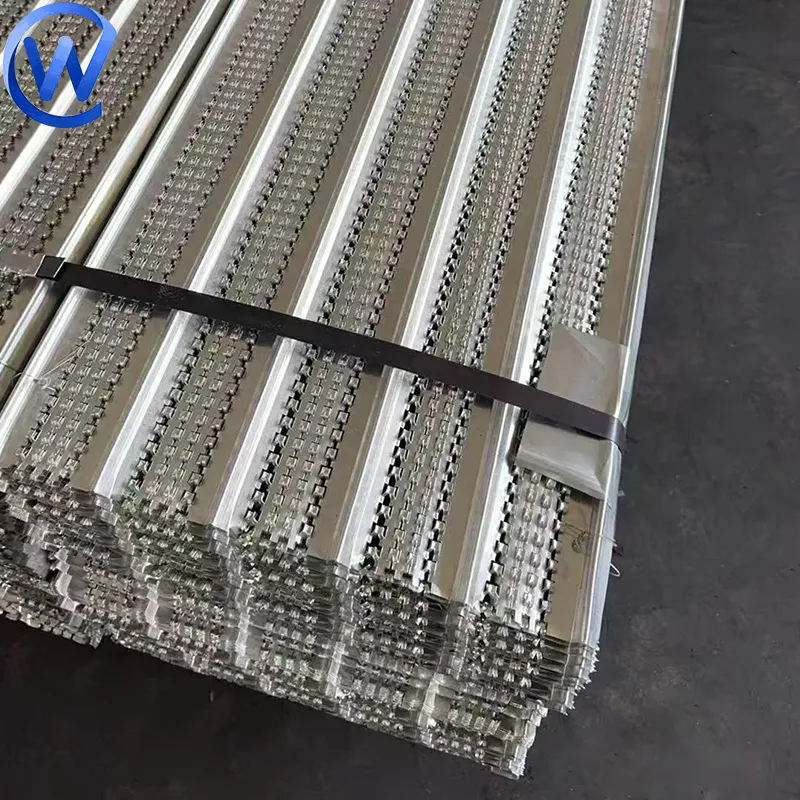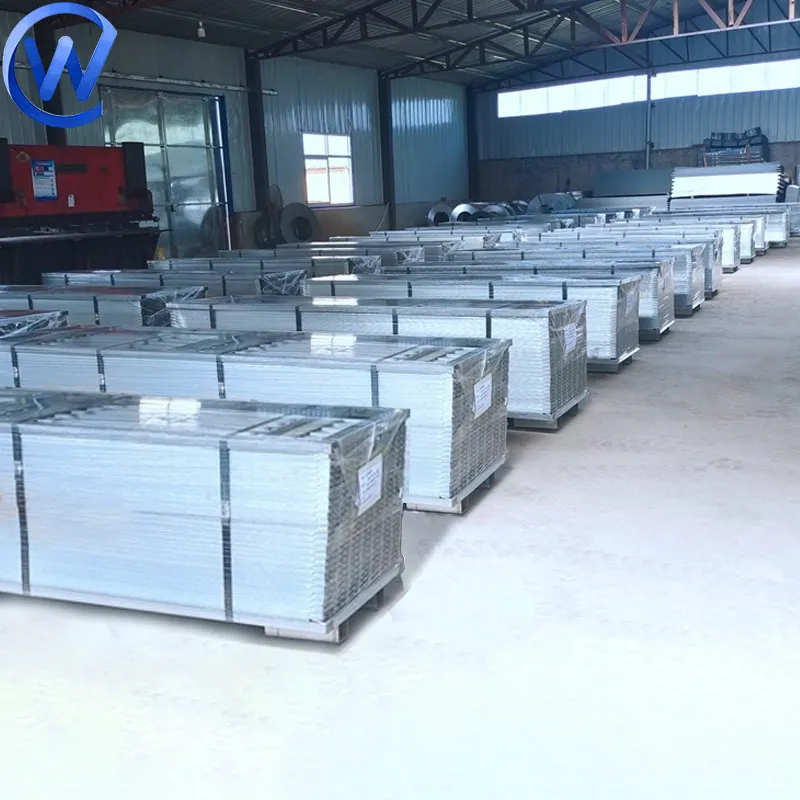-
+86 15030157877
-
sales@galvanizedmetalmesh.com
Sep . 19, 2025 10:25 Back to list
Strong Rib Lath: Optimal Plaster Key & Reinforcement Solutions
In modern construction and engineering, the selection of robust and efficient materials is paramount for structural integrity and long-term performance. Among these, Rib Lath stands out as a critical component, widely utilized for its exceptional properties as a plaster key and reinforcement material. This B2B guide delves into the technical aspects, applications, and strategic advantages of this essential building product, catering to architects, engineers, contractors, and procurement specialists seeking optimal solutions for their projects.
Industry Trends and Market Dynamics
The global construction industry is experiencing dynamic shifts, driven by increasing urbanization, infrastructure development, and a growing emphasis on sustainable and resilient building practices. Within this landscape, demand for high-performance building materials like Rib Lath is steadily rising. Key trends include the push for faster construction methods, enhanced fire resistance in buildings, and improved thermal insulation, all of which benefit from the structural support and excellent plaster keying capabilities of ribbed expanded metal lath. Regulatory frameworks, such as stricter building codes and energy efficiency standards, further compel the adoption of materials that offer superior adhesion for stucco, plaster, and fireproofing compounds. The market is also witnessing innovations in material coatings, enhancing corrosion resistance and extending the service life of lath products in aggressive environments.
According to recent market analyses, the expanded metal lath market is projected to grow at a compound annual growth rate (CAGR) of over 5% from 2023 to 2028, largely fueled by residential and commercial construction growth in emerging economies and retrofitting initiatives in developed regions. This growth underscores the enduring relevance and technical superiority of specialized lathing products in modern construction.
Manufacturing Process Flow
The production of Rib Lath is a sophisticated industrial process designed to yield a product with consistent quality and performance characteristics. It primarily involves the slitting and expanding of metal sheets, followed by a unique rib-forming stage.
Materials and Initial Preparation:
The primary materials used are galvanized steel, often hot-dipped galvanized to ASTM A653 standards, or sometimes stainless steel for extreme corrosion resistance. The steel sheets are precisely chosen for their gauge (thickness) and metallurgical properties, ensuring optimal strength-to-weight ratio and ductility for the expanding process. Target industries include petrochemical, metallurgy, and general construction, where durability and corrosion resistance are critical.
Manufacturing Stages:
- Slitting: Large coils of steel are fed into a specialized slitting machine. This machine cuts precise, staggered slits into the metal sheet, which are crucial for the subsequent expansion process. The accuracy of these slits directly impacts the final mesh pattern and strength. This is a form of precision machining.
- Expanding: The slit sheet is then subjected to a cold-forming process where it is stretched and expanded. This action opens the slits into diamond-shaped mesh openings, creating a robust, monolithic structure without welds or interwoven strands. This expanded metal structure provides an excellent mechanical key for plaster or stucco.
- Rib Forming: This is the defining characteristic of rib lath. Immediately after expansion, the flat mesh undergoes a profiling process where longitudinal ribs are pressed into the sheet. These ribs, typically V-shaped, provide additional stiffness, allowing for wider spacing of supports and creating a stronger, self-furring surface for plaster application. The number and depth of ribs vary by product type (e.g., 3/8" High Rib Lath, 3/4" High Rib Lath). This process enhances the product's energy-saving properties by providing better insulation integration.
- Cutting and Finishing: The continuous ribbed mesh is then cut to standard sheet dimensions. Edges are often sheared clean, and the product undergoes a final inspection for dimensional accuracy, mesh consistency, and rib integrity.
- Quality Control and Testing: Throughout the entire process, rigorous quality control checks are implemented. This includes verifying material specifications, dimensional tolerances, rib height and spacing, and coating thickness (for galvanized products). Products typically conform to standards such as ASTM C847 (Standard Specification for Metal Lath) and are often manufactured under ISO 9001 certified quality management systems.
The service life of a properly installed rib lath system, especially when galvanized or stainless steel is used, can easily exceed 50 years in typical building environments, making it a highly durable solution. In water supply & drainage systems, for example, its corrosion resistance ensures longevity.

Technical Specifications and Parameters
Understanding the precise technical specifications of Rib Lath is crucial for optimal selection and application. Key parameters include material gauge, rib height, sheet size, and weight per square yard, all of which influence its suitability for various construction demands.
Standard Rib Lath Specifications:
| Parameter | 3/8" High Rib Lath (ASTM C847) | 3/4" High Rib Lath (ASTM C847) | Notes |
|---|---|---|---|
| Material | Hot-Dipped Galvanized Steel (ASTM A653 G60) | Hot-Dipped Galvanized Steel (ASTM A653 G60) | Optional: Stainless Steel (Type 304, 316) available for specialized corrosive environments. |
| Gauge (US Standard) | 26, 27, 28 Ga. | 26, 27, 28 Ga. | Heavier gauges (lower numbers) provide greater rigidity and impact resistance. |
| Rib Height (Nominal) | 3/8" (9.5mm) | 3/4" (19mm) | Higher ribs increase overall stiffness and embedment depth for plaster/stucco. |
| Weight (per sq. yd) | 2.75, 3.4 lbs | 3.4, 4.0 lbs | Weight correlates with gauge and provides an indication of material content. |
| Sheet Size (Standard) | 24" x 96" (2 sq. yds) | 24" x 96" (2 sq. yds) | Custom lengths and widths can be fabricated for large-scale projects. |
| Lath Type | Self-Furring | Self-Furring | Integrates furring effect, reducing the need for separate furring channels. |
| Mesh Openings | Approx. 3/8" x 3/4" (diamond) | Approx. 3/8" x 3/4" (diamond) | Optimized for plaster keying and material embedment. |
The specific design of the ribs contributes significantly to the structural integrity. For instance, the deeper ribs of 3/4" high rib lath provide superior rigidity, allowing for wider stud spacing and reducing the need for additional framing, which can translate to material and labor cost savings. The expanded metal mesh ensures an excellent key for plaster and stucco, minimizing cracking and delamination over time.

Application Scenarios and Target Industries
Rib Lath is a versatile material with extensive applications across various sectors, demonstrating its adaptability and effectiveness in diverse construction requirements. Its unique structure makes it ideal for specific challenging environments and demanding architectural designs.
Key Application Areas:
- Stucco and Plaster Reinforcement: This is the most common application. It provides a superior mechanical key for exterior stucco and interior plaster finishes, preventing cracking and enhancing durability, especially in areas prone to thermal expansion or structural movement.
- Concrete Formwork: Utilized as a permanent formwork for concrete slabs, beams, and columns, particularly in situations where conventional formwork removal is difficult or undesirable. The ribs provide excellent bonding to the concrete, acting as a shear key and reducing leakage of cement paste. This is particularly valuable in suspended slab construction or for construction joints.
- Fireproofing Applications: In commercial and industrial buildings, it serves as a substrate for spray-applied fireproofing materials, ensuring superior adhesion and even distribution of fire-resistive coatings on steel beams and columns.
- Soffits and Suspended Ceilings: Provides a lightweight yet rigid base for plaster in soffit applications and complex ceiling designs, offering excellent aesthetic and structural consistency.
- Acoustic Ceilings: When combined with appropriate acoustic plaster, rib lath can contribute to sound dampening and acoustic control in large halls, auditoriums, and commercial spaces.
- HVAC Duct Insulation: Used to secure insulation materials around large HVAC ducts, providing a durable and stable substrate.
Target Industries:
- Residential Construction: Single-family homes, multi-story apartments, particularly for exterior stucco facades.
- Commercial & Institutional Construction: Office buildings, hospitals, schools, retail centers for internal plasterwork, external stucco, fireproofing, and specialized ceilings.
- Industrial Facilities: Factories, warehouses, energy plants, especially for fireproofing and durable internal finishes.
- Infrastructure Projects: Tunnels, bridges, water treatment plants where permanent formwork or robust reinforcement is required.
- Renovation & Restoration: Ideal for matching existing plaster and stucco finishes in heritage buildings due to its traditional yet robust application method.

Technical Advantages and Performance Benefits
The engineered design of Rib Lath offers a suite of technical advantages that translate into significant performance benefits for construction projects. These advantages address common challenges in plastering, stucco application, and concrete forming.
- Superior Plaster Key: The unique mesh pattern, combined with the longitudinal ribs, creates an exceptional mechanical bond for plaster and stucco. This minimizes sagging, improves adhesion, and reduces the risk of cracking, leading to a more durable and aesthetically pleasing finish.
- Enhanced Rigidity and Self-Furring Properties: The ribs significantly increase the stiffness of the lath, allowing for wider support spacing (e.g., up to 24 inches on center for 3/8" rib lath with vertical application) compared to flat lath. This "self-furring" nature of the ribs eliminates the need for separate furring channels in many applications, simplifying installation and reducing material costs.
- Reduced Plaster Sag and Waste: The increased rigidity and the ability of the plaster to "key" into the ribs mean less material sags or falls off during application, leading to significant material savings and cleaner worksites. This directly contributes to cost-efficiency and reduced environmental impact through waste reduction.
- Corrosion Resistance: Galvanized rib lath provides excellent resistance to rust and corrosion, crucial for exterior applications or environments with high humidity. For highly aggressive environments, stainless steel options offer superior long-term performance.
- Versatility in Forming: Its ability to be easily cut and bent allows for flexible application across various architectural forms, including curved surfaces, arches, and intricate designs, without compromising structural integrity.
- Fire Resistance: When used as a substrate for fire-rated plaster or spray-applied fireproofing, rib lath significantly enhances the fire-resistive properties of structural elements, aligning with stringent building safety codes.
These advantages collectively contribute to lower lifetime maintenance costs, improved structural performance, and accelerated project timelines, making rib lath a cost-effective and technically superior choice for discerning construction professionals. For example, in a recent project involving a multi-story commercial building in a coastal region, the use of galvanized 3/8" high rib lath for exterior stucco reduced installation time by 15% due to its self-furring capability and improved plaster adherence, leading to significant labor savings.

Vendor Comparison and Selection Criteria
Choosing the right supplier for rib lath is as crucial as selecting the right product. While specific vendor names are beyond the scope of this general guide, critical comparison criteria ensure procurement of high-quality, compliant materials.
Key Comparison Metrics:
| Criteria | Importance Level | Evaluation Factors |
|---|---|---|
| Product Quality & Compliance | High | Adherence to ASTM C847, ISO 9001 certification, consistent material gauge, uniform rib height and spacing, quality of galvanization. |
| Material Origin & Traceability | Medium | Availability of material test certificates, clear supply chain, commitment to ethical sourcing. |
| Customization Capabilities | Medium | Ability to provide custom gauges, sheet sizes, or special coatings for project-specific requirements. |
| Logistics & Lead Times | High | Reliable delivery schedules, global shipping capabilities, efficiency in order fulfillment, responsive communication. |
| Technical Support & Expertise | High | Availability of technical data sheets, installation guides, and experienced support staff for project consultation. |
| Pricing & Value Proposition | Medium | Competitive pricing, but balanced against quality, service, and total cost of ownership (TCO). |
Prospective buyers should request samples, review certifications, and engage in detailed discussions regarding project-specific needs to ensure the selected vendor can consistently meet the rigorous demands of commercial and industrial construction. A proven track record and positive customer testimonials are strong indicators of reliability and expertise.

Customized Solutions
While standard sizes and materials for rib lath serve a vast array of applications, complex projects often necessitate customized solutions. Reputable manufacturers offer tailored options to meet unique architectural, structural, or environmental demands.
- Special Gauges and Sheet Dimensions: For projects requiring enhanced structural support or specific coverage, manufacturers can produce rib lath in non-standard gauges (e.g., heavier than 26Ga) or custom sheet lengths and widths, optimizing material usage and reducing on-site cutting.
- Advanced Corrosion Protection: Beyond standard galvanization, options like marine-grade hot-dipped galvanization or specific stainless steel alloys (e.g., 316L for coastal or chemical environments) can be provided for maximum resistance in highly corrosive or exposed conditions.
- Architectural Flexibility: For unique design elements such as complex curves, domes, or intricate decorative plasterwork, manufacturers can offer lath that is pre-curved or fabricated to specific forms, significantly simplifying installation and ensuring precise aesthetic outcomes.
- Integration with BIM Models: Leading suppliers can provide detailed product data and specifications compatible with Building Information Modeling (BIM) platforms, streamlining design, procurement, and construction processes for large-scale projects.
Engaging early with manufacturers allows for comprehensive consultation, ensuring that customized rib lath solutions are engineered to precise project specifications, optimizing performance, cost-efficiency, and compliance with all relevant standards.
Application Case Studies
Case Study 1: High-Rise Residential Facade Renovation
Project Overview: A 30-story residential tower in a bustling urban center required a complete exterior facade renovation to address aging stucco and enhance thermal performance. The project demanded a durable, crack-resistant substrate for a new exterior insulation and finish system (EIFS) with a stucco topcoat.
Solution Implemented: 3/8" High Rib Lath (26 Ga. Galvanized) was selected due to its superior rigidity and excellent plaster keying properties. The self-furring ribs facilitated quick installation directly over the existing sheathing, creating a consistent 3/8-inch plaster ground. This allowed for optimal embedment of the scratch coat and subsequent stucco layers.
Results: The use of rib lath significantly reduced material sag during stucco application, leading to a 10% reduction in material waste and an estimated 8% increase in application speed compared to traditional flat lath. The resulting facade demonstrated excellent crack resistance and a uniform finish, exceeding client expectations for aesthetic quality and long-term durability. Post-installation inspections confirmed a robust, well-adhered finish, capable of withstanding urban environmental stresses for decades.

Case Study 2: Industrial Plant Fireproofing
Project Overview: A new petrochemical processing plant required extensive fireproofing for structural steel members in critical process areas. The design called for a spray-applied cementitious fireproofing system that needed reliable adhesion to ensure maximum fire resistance ratings (up to 4 hours).
Solution Implemented: 3/4" High rib lath (24 Ga. Galvanized) was strategically chosen and affixed to the steel beams and columns. The deep ribs and robust mesh provided an optimal substrate for the heavy-duty fireproofing material, ensuring both mechanical anchorage and consistent thickness of the applied coating.
Results: The enhanced rigidity of the 3/4" high rib lath facilitated quick and secure attachment to the steelwork, even in challenging overhead applications. The deep profile ensured excellent embedment and minimal slumping of the fireproofing compound, leading to uniform coverage and reliable fire-resistive performance as per UL 263 (ASTM E119) standards. This proactive approach significantly reduced project risks associated with fire safety compliance and operational continuity.
Frequently Asked Questions (FAQ)
Q: What is the primary difference between Rib Lath and standard Expanded Metal Lath?
A: The defining feature of rib lath is its integrated longitudinal ribs. These ribs provide significantly greater stiffness and strength compared to flat expanded metal lath, allowing for wider spacing of supports and often eliminating the need for separate furring strips. This translates to faster installation and enhanced structural integrity for plaster and stucco applications.
Q: Is rib lath suitable for exterior applications?
A: Yes, particularly galvanized rib lath, which offers excellent corrosion resistance. For highly aggressive or marine environments, stainless steel options are available for superior durability and longevity against environmental degradation. It is widely used for exterior stucco finishes.
Q: What are the standard lead times for bulk orders?
A: Standard lead times for common specifications of rib lath typically range from 2-4 weeks, depending on order volume and current production schedules. For customized orders, lead times may extend to 4-6 weeks to account for specialized manufacturing and quality control processes. Expedited shipping options are often available upon request.
Q: What warranty is provided with rib lath products?
A: Our rib lath products come with a standard 10-year limited warranty against manufacturing defects, assuming proper installation and adherence to industry best practices and building codes. Specific warranty terms may vary based on material type (e.g., stainless steel may carry an extended warranty) and project specifications, detailed in our official product documentation.
Q: How can I get technical support or assistance with product selection?
A: Our dedicated team of technical experts and sales engineers is available to provide comprehensive support. You can reach us via phone at [Insert Phone Number] or email at [Insert Email Address] for consultation on product specifications, application guidance, custom solutions, and order inquiries. We offer pre-sales technical advice and post-sales support to ensure successful project outcomes.
Conclusion
Rib Lath represents a cornerstone material in contemporary and traditional construction, offering unparalleled advantages in plaster and stucco reinforcement, fireproofing, and concrete forming. Its engineered design, robust material properties, and versatile applications contribute significantly to the durability, safety, and aesthetic quality of built structures. As industry demands evolve towards more resilient and efficient building practices, the strategic selection and implementation of high-quality rib lath solutions remain critical for achieving long-term performance and project success. Partnering with a reputable manufacturer that upholds stringent quality standards and offers comprehensive technical support ensures that every project benefits from the full potential of this indispensable construction material.
References
- American Society for Testing and Materials. (2020). ASTM C847/C847M-20, Standard Specification for Metal Lath. ASTM International.
- International Organization for Standardization. (2015). ISO 9001:2015, Quality management systems – Requirements. ISO.
- Portland Cement Association. (2006). Stucco: Best Practices Guide. PCA.
- UL LLC. (2018). UL 263, Standard for Fire Tests of Building Construction and Materials. Underwriters Laboratories.
- Construction Market Research Reports. (2023). Global Expanded Metal Lath Market Analysis. [Hypothetical Industry Report, based on general market trends].
-
Concertina Razor Wire: The Ultimate Guide to Secure, Practical Barrier Solutions
NewsNov.20,2025
-
Barbed Wire Fence: Durable Security Solutions for Global Agriculture and Industry
NewsNov.19,2025
-
Barbed Wire: Durable & Affordable Security Solutions for Global Applications
NewsNov.18,2025
-
Durable and Cost-Effective Fence Wire Mesh for Farm Sheep – Global Insights & Innovations
NewsNov.18,2025
-
Durable and Cost-Effective Farm Fencing Wire Galvanized | Global Use & Benefits
NewsNov.15,2025
-
Essential Guide to Wire for Fencing: Applications & Innovations
NewsNov.14,2025



